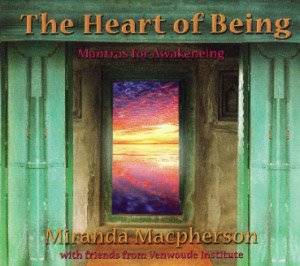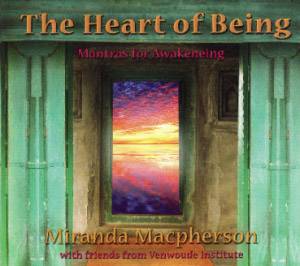The 14th Century Sufi poet Hafiz posed the following question:
“What’s the difference between your experience of existence and that of a saint?
The saint knows that the spiritual path is a sublime chess game with God, and that The Beloved has just made such a stupendous move, that the saint is tripping over joy, rolling over laughing and saying ‘I Surrender!’ Whereas my dear, I’m afraid you still think you have a thousand serious moves.”
Our ego hears the invitation to surrender and is stumped. “How do I do that?” Recently I was on the phone with a long-standing student I will call Angela who was courageously disengaging some of the deeper threads of her ego defenses as we all must in walking a genuine spiritual path. Our inquiry had brought her to meet some central ego underpinnings of how she had become disconnected from the love within herself. She was flooded with feelings of fear, deficiency, frustration and lack. She could see the historical imprints, the beliefs that formed, and how this played out in her life as painful patterns of sabotaging love. Although Angela could see intellectually that these self-images and the feelings were not objectively real, she was identified and therefore caught in a contracted painful place inside herself. In this Angela cried out, “what do I do now?” I replied, “Nothing at all. Just be here, resting undefended and open. Nothing you have to fix or get or do. Just opening, just softening, just allowing. See what’s really here.” It sounds so simple and on one level it is simple, but when any of us are caught in the grip of our ego identity, the practice of defenselessness can feel like being asked to let go into a bed of crushed glass. Unless we have a true container of support both within and without it feels impossible. Often we just bounce back up to the surface of our personality or try to work it out intellectually with our mind. “Give me some steps,” she said. I asked her what she would typically do when feeling this way. Quickly she outlined several strategies of disconnecting from her experience – the kinds of things perhaps you find yourself also doing: going to the fridge, turning on the TV, surfing the internet to buy something she did not really want or need, getting into a fight with someone, calling a friend to recount the story of how hopeless it all is, and keeping so busy to avoid having to feel much at all.
The Practice of Un-Do-Ism
“OK, here are your steps,” I said. I heard pen scratches down the telephone line as she diligently prepared to write what I was about to say:
1. See if you can not pick up any of those strategies for a moment.
2. See if you can relax the tendency to try to change or transform your experience in any way.
3. Just be here undefended for a moment and breathe. Sense your feet on the ground and notice how the earth holds you right now without any agenda. DO NOTHING. Just sit here.
4. See if you can be curious about what this experience really is, see if there is anything new to see here. 5. See who this is happening to. These five steps guide us into the beginning of self-inquiry in the midst of an ego knot. Known in India as Jnana yoga it is thought to be the most direct path for self-realization, but also the hardest. Genuinely turning within to penetrate in and through the ego mind to the depths of presence within feels hard because it brings us very quickly to the edges of what we know ourselves to be. While we may complain about our suffering, we are attached to it because our ego worships familiarity more than anything else. Self-inquiry invites us to dive in and through our direct experience, whatever that happens to be, and do nothing. This is HOW surrender happens. It is not something we do, rather it happens when we relax our usual egoic doing. Initially it feels confounding. The moment we relax our usual ego strategies to reject something or grasp for something preferable, we meet our sense of disconnection itself. This usually feels like being cut off from love, strength, capacity, peace, joy, and support. We feel like a young child – scared, alone, insufficient and not knowing what to do – and then judge ourselves for our state. How can we open rather than revert to our usual defensive strategies in a moment like this if we don’t have a spiritual guide holding space for us? What CAN we do that supports surrender?
Expanding our inner support
All the great wisdom traditions have echoed the need to cultivate certain virtues in support of embodying spiritual practice in daily life. Every tradition emphasizes the need for trust, humility, open-mindedness, compassion, patience and more. These are far more than mere conceptual principles. They can become an active presence that fleshes us out – making us spiritually ripe, so we can open into new depths just as ripe fruit on a tree yields easily and falls off the branch. I am always learning so much from those who come to practice with me. Over the last year in particular, I have been tracking what people really need to cultivate in order to genuinely let their practice of inquiry take off so deep and real transformation happens. I kept seeing how certain qualities make us spiritually ripe, give us the inner support to open rather than just pick up our usual defense. Out of this I have formed the supportive practices I refer to as “the pillars of awakening” – a specific synthesis of qualities we can turn toward in daily life that significantly amplify our capacity for deeper inquiry. Visualize yourself standing in a circle. Surrounding you are great pillars, and each pillar contains an immense presence representing each of these qualities:
TRUST – in your own fundamental goodness, in the goodness underlying all existence. This produces courage and true confidence to open into the unknown, trusting that all will be well even if we don’t know how.
LOVE OF TRUTH – for its own sake, whatever it reveals. This produces devotion, and dedication and purity of motivation so that we are unafraid to open beyond our self-images and taste God.
CURIOSITY – sincere interest to discover what is truly real. This produces open-mindedness and expansion of our conciousness.
NON-ATTACK – the commitment to dis-engage from self attack and inner criticism. This cultivates compassion for our humanity, allows space for us to experiment and learn, and intercepts the inner critic that so often closes us down.
HUMILITY – recognizing that we do not necessary know what anything is truly for. This pops our ego’s arrogance, and supports capacity to open into the unknown and allow space for grace and guidance.
WILLINGNESS – activates our true desire and turns us away from ego indulgence to our deeper impulses. Together, they form a true container that holds us, birthing within us the virtues that make it possible to open into whatever life brings so that everything we experience gets turned into the path of awakening. I have written on some of the pillars in previous articles on my website (the full teachings of each pillar will be in my new book still being penned). In daily life, particularly when we find ourself at a stuck place, this is what we can turn towards to stay on track with our deepest intent.
Your spiritual strengths and weaknesses
Looking at these qualities, you might notice that some come more easily to you, while others are much more challenging. Each of us has a relationship with these virtues, unique to our personality structure and history. Since each of these qualities operate synergistically as a unit to create the inner support for awakening, seeing where your spiritual strengths and weaknesses lie is very helpful information. Just as going to the gym and only exercising your already developed muscles will create an imbalance, it helps to work with your weaknesses also. You can then inquire into what limits your access to this virtue and what supports it. After a few minutes of resting undefended with states and feelings Angela had spent so much of her life trying to avoid, her state palpably shifted and she began to giggle. I asked her “what’s here now?” She replied “my fear is not real at all. I just feel incredibly peaceful now. Vast and inherently one with everything.” I asked her where this peace was coming from. “Within my heart,” she replied. “It was here all the time. I just tend to forget.” Don’t we all! I left her with a new “assignment,” which was:
- Be curious about what exactly causes you to leave your heart.
- What helps you remember?
- What supports you to abide?
Each day, turn toward what truly supports you. Compassionately investigate the forces that pull you off. Cherish contact with your true heart above all else. It can be that simple.





